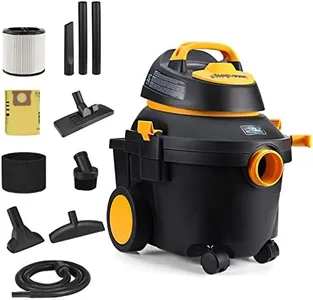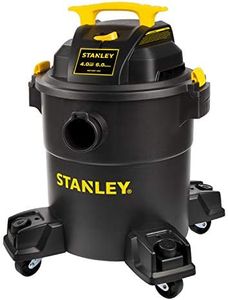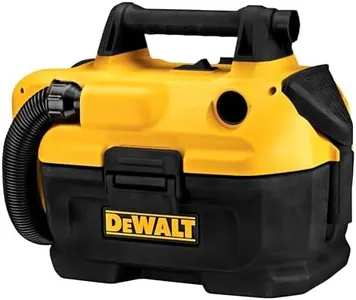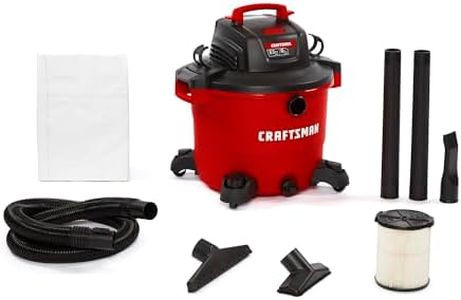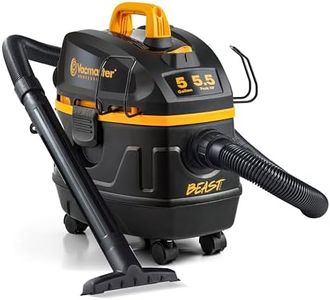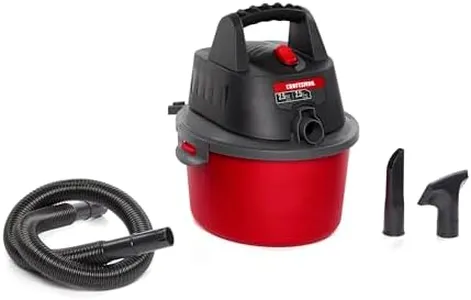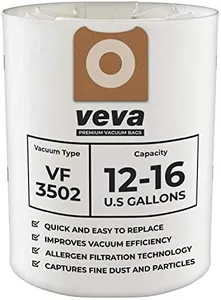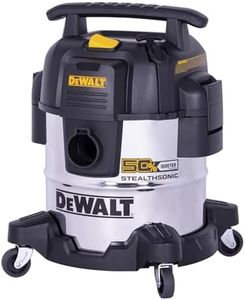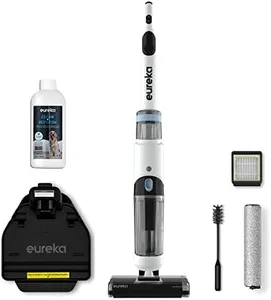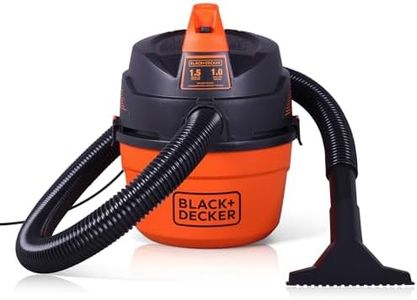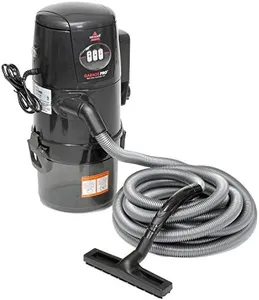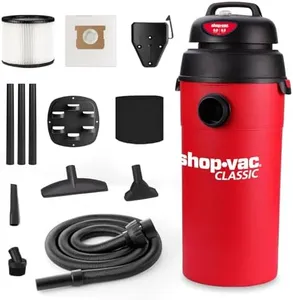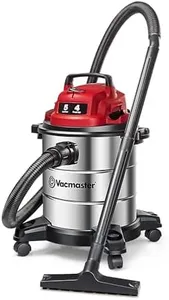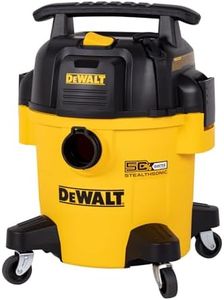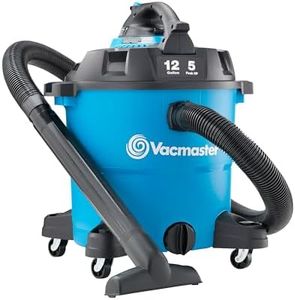10 Best Garage Vacuums 2025 in the United States
Our technology thoroughly searches through the online shopping world, reviewing hundreds of sites. We then process and analyze this information, updating in real-time to bring you the latest top-rated products. This way, you always get the best and most current options available.

Our Top Picks
Winner
Stanley - SL18116P Wet/Dry Vacuum, 6 Gallon, 4 Horsepower Black
Most important from
12718 reviews
The Stanley SL18116P Wet/Dry Vacuum is a versatile tool designed for various cleaning tasks in garages, workshops, and homes. With a 6-gallon capacity, it reduces the frequency of emptying, making it convenient for extended cleaning sessions. The 4 horsepower motor provides strong suction power, capable of handling both wet and dry messes, which is ideal for a range of cleanups from liquid spills to dust and debris.
Additionally, this vacuum doubles as a blower, adding to its functionality by allowing you to clear leaves and other outdoor debris. The 16-foot cleaning reach, achieved via a 6-foot hose and 10-foot power cord, allows for flexibility and reduces the need to constantly switch power outlets. The included attachments—such as the floor nozzle, crevice nozzle, and extension wands—enhance its cleaning versatility. The filtration system includes both foam and reusable dry filters that contribute to effective dust capture, although users should note that the filtration may require regular maintenance to maintain performance.
While the noise level is moderate at 80 dB, it may still be a consideration for those seeking quieter operation. Weighing 13.4 pounds and equipped with four swivel casters, the vacuum offers decent portability, though some might find it less convenient compared to more compact models. Despite its strengths, the lack of cordless functionality might be a limitation for users needing more mobility. For users needing a robust and multifunctional vacuum for substantial cleaning tasks, the Stanley SL18116P offers a compelling blend of power and versatility.
Most important from
12718 reviews
DEWALT 20V MAX Cordless Wet-Dry Vacuum, Portable Shop Vac, 2 Gallon Tank Capacity, Tool Only (DCV580H)
Most important from
7882 reviews
The DEWALT 20V MAX Cordless Wet-Dry Vacuum is a versatile, portable option for those needing both wet and dry cleaning capabilities in their garage or workshop. Its cordless design, powered by a 20V MAX battery (sold separately), adds significant convenience, allowing you to move freely without being tethered to an outlet. The 2-gallon tank capacity is sufficient for most small to medium cleanups, including handling spills and blockages. The vacuum's HEPA-rated filter is effective in trapping fine dust particles, ensuring cleaner air during operation. The filter is also washable and reusable, which helps reduce ongoing maintenance costs. The included attachments, such as the wide nozzle tool and crevice tool, enhance its usability for different cleaning tasks.
Additionally, its heavy-duty, crush-resistant hose provides durability and ease of use. A notable feature is the on-board storage for hose and accessories, making the vacuum easy to carry and transport. However, the 31 CFM suction power might be considered on the lower end for heavy-duty tasks, and the noise level is relatively high at 31 dB. Another consideration is that the battery and charger are sold separately, which adds to the initial cost.
Weighing 8 pounds, the vacuum is quite portable but may not be the lightest option available. It is designed for indoor use and recommended for garages, hard floors, and bare floors. This product is well-suited for users who need a portable, flexible solution for general garage and workshop cleaning tasks.
Most important from
7882 reviews
CRAFTSMAN CMXEVBE17595 16 Gallon 6.5 Peak HP Wet Dry Vac, Heavy-Duty Shop Vacuum Wet and Dry with Filter, Dust Bag, Hose and Attachments for Home Projects & Renovations
Most important from
11348 reviews
The CRAFTSMAN CMXEVBE17595 is a heavy-duty wet/dry vacuum designed for tackling larger projects in spaces like garages and workshops. With a robust 6.5 Peak HP motor, it delivers impressive suction power, making it suitable for heavy debris and liquid spills. Its generous 16-gallon capacity allows you to clean without frequent emptying, and the rear blowing port adds versatility for clearing leaves or grass clippings outdoors.
One of the standout features is the Dual-Flex technology in the hose, which gives you flexibility and 180-degree mobility, helping to prevent kinking while you work. Additionally, the vacuum comes with a good range of accessories, including multiple nozzles and extension wands, making it adaptable for different cleaning tasks.
This vacuum is not cordless, which means you’ll need to work near an outlet, potentially limiting mobility in larger areas. While it has a decent noise level of 69 dB, it may still be noticeable during use, particularly in quiet environments. Although it is portable due to its wheels, at 26 pounds, it might be cumbersome for some users when moving it across long distances. In terms of filtration, it features a cartridge filter and has compatible dust bags, which can help maintain the performance and longevity of the vacuum. The 3-year limited warranty also adds a layer of assurance regarding its durability.
The CRAFTSMAN CMXEVBE17595 is a strong choice for individuals who need a powerful and versatile vacuum for heavy-duty tasks. However, users should consider the corded design and weight when deciding if it's the right fit for their cleaning needs.
Most important from
11348 reviews
Buying Guide for the Best Garage Vacuums
Choosing the right garage vacuum can make a significant difference in maintaining a clean and organized workspace. When selecting a garage vacuum, it's important to consider various factors that will ensure it meets your specific needs. Here are some key specifications to look out for and how to navigate them to find the best fit for you.FAQ
Most Popular Categories Right Now
